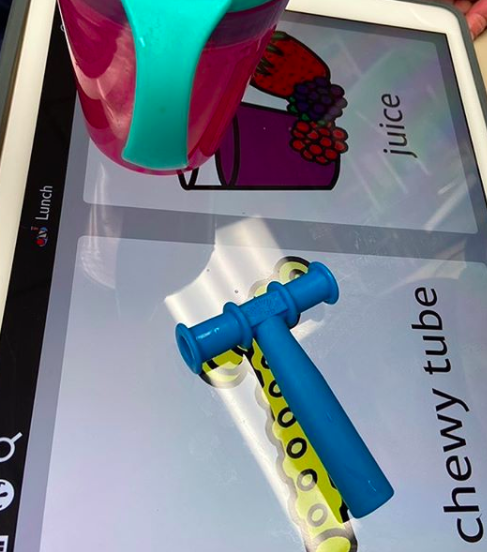
This little one is transitioning through CVI stages.
We are moving out of tangible and concrete items and onto a screen. The first step in doing this is providing a voice output underneath the item. You can either use a voice output switch or some sort of device.
Before I do any motor planning or set up any sort of communication system I need to first teach the child that there will be a new way to access communication messages through a screen.
What you are seeing here is modified snap plus core first with the actual items on top. I made it extremely big and provided her such a broad area to make sure that as soon as she grabs or touch the bottom of the item the voice output would go off.
Next I remove the items and she activated the areas where the items ones were. Again this is step one, we are just learning that there is a new access method for communication. Step two Is to then introduce more items and words, followed by setting up a robust communication system.